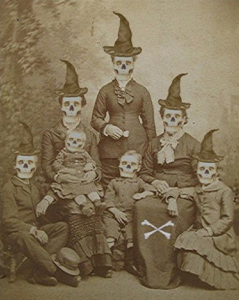 After the closure of Whare Ra bought to an end the old Golden Dawn lineage, their have been numerous groups started by those either using Israel Regardie’s Golden Dawn books, or old papers and manuscripts claiming that they are “traditional.” Some of these modern Golden Dawn, various groups have been falling over themselves to prove that they use traditional Golden Dawn methods. Even though various Golden Dawn groups had problems or flaws in their teaching, the word traditional is synonymous with better with no one wanting to say that they are “new and improved.”
After the closure of Whare Ra bought to an end the old Golden Dawn lineage, their have been numerous groups started by those either using Israel Regardie’s Golden Dawn books, or old papers and manuscripts claiming that they are “traditional.” Some of these modern Golden Dawn, various groups have been falling over themselves to prove that they use traditional Golden Dawn methods. Even though various Golden Dawn groups had problems or flaws in their teaching, the word traditional is synonymous with better with no one wanting to say that they are “new and improved.”
At the same time the new traditionalists do not want to appear as if they are stuck in the mud and living in the Victorian period. They rightly suggest that the tradition must move with the times. Thus, they can have their cake and eat it too.
What is lacking in these arguments is a definition of what traditional Golden Dawn really is, beyond an appeal to bogus “marketing.”
Traditional Landmarks
Some groups have tried to define the Golden Dawn tradition by trying to find what is called in masonry “landmarks.” These are the parts of an order which if they were removed or changed would make it something different. The term is biblical and comes from Proverbs 22:28: “Remove not the ancient landmark which thy fathers have set”, referring to stone pillars set to mark boundaries
The Masonic Landmarks are clear. There had to be a belief in a Supreme Being, immortality of the soul, a book of sacred law, the use of a legend in the Third Degree, passwords and the use of a symbolic Lodge ritual and that the Mason is a freeborn man of lawful age.
These appear to be incredibly wide but, while you would think that this would be easy, the Golden Dawn has a problem pinning down what its landmarks are. Websters dictionary says that tradition is an inherited, established, or customary pattern of thought, action, or behaviour (such as a religious practice or a social custom). When we look at the Golden Dawn we must look at it for these criteria. Logic would say that if a group deviates from such a pattern of behaviour it stops being traditional.
Traditional through Isis-Urania
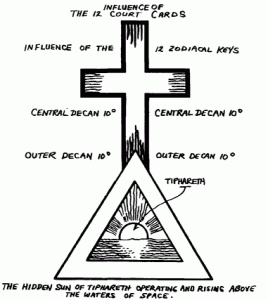 So, let us look at the foundation of the Golden Dawn tradition the Isis-Urania temple in London. That group was founded on rituals which were based on the Cipher manuscripts. Samuel Mathers used these skeleton documents to build the rituals for the 0=0 to the 4=7 and these rites were used throughout the history of the order. Logically we would think that these should give us a clear pattern of what the tradition should be. If that is the case then it is safe to say that we are looking at a quasi-Masonic rite performed by a small group of people in someone’s house. In the early days, there were unlikely to be many robes worn with the only uniform piece of equipment that was compulsory was the sash.
So, let us look at the foundation of the Golden Dawn tradition the Isis-Urania temple in London. That group was founded on rituals which were based on the Cipher manuscripts. Samuel Mathers used these skeleton documents to build the rituals for the 0=0 to the 4=7 and these rites were used throughout the history of the order. Logically we would think that these should give us a clear pattern of what the tradition should be. If that is the case then it is safe to say that we are looking at a quasi-Masonic rite performed by a small group of people in someone’s house. In the early days, there were unlikely to be many robes worn with the only uniform piece of equipment that was compulsory was the sash.
So from this we can say that the traditional Golden Dawn is actually a non-magical organisation of five rituals based on the Cipher manuscripts. These would appear then to be the landmarks of the Golden Dawn and if you changed these, it would cease to be Golden Dawn.
But after a couple of years, the Golden Dawn writes the Portal ceremony. I published this early ritual for the first time in Mather’s Last Secret. It uses a slightly different set of formulas for the logic of the ritual than the Cipher manuscripts. It also removes most of the officers and the map of the temple floor.
So does this mean that Isis-Urania stopped being a traditional Golden Dawn when Mathers wrote the new Portal? Of course not, but it means that the Ciphers were not written in stone and the order had the flexibility to develop them. In later years, few people even saw the Ciphers or knew of their existence, if they were going to be landmarks then they were going to be invisible.
Second Order
Things became even less traditional when the Second Order was lowered on top of the Golden Dawn and in particular the Z documents. On the face of it the Z documents provide the guidelines for the ritual equipment and practices that were already going on. However, they also add a lot more to the mix which could not be considered traditional by the earlier standards. A wand was no longer just the symbol of the Heirophant’s directing power and its symbolism was spelt out. The wands represented parts of the tree, so when you held it in one part you were using the power of the path. Also the Z documents added layer upon layer to the 0=0 ritual making it truly magical.
Logically then this would be the time to say that the Golden Dawn Tradition began.
It would be familiar to modern Golden Dawn people at this time. It was the period of Yeats, Farr, and Crowley it was the brief moment that the teaching and ritual practices were stable.
Unfortunately, this is untrue either. Practice varied wildly between the different temples. The Bradford Temple was only accepting Masons and therefore did not allow women to join, something which was against the Second Order Oath. There are subtle differences between some of the manuscripts.
Traditional through the Z-documents
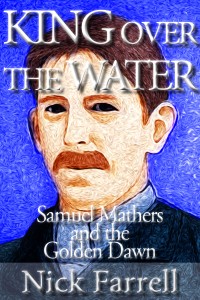 The Z documents were often not being used either. One of the most senior members of the Golden Dawn Edward Berridge, who at various points was Mathers’ representative in London, did not have a copy and so cannot have been carrying out any of the visualisations and magic contained in them.
The Z documents were often not being used either. One of the most senior members of the Golden Dawn Edward Berridge, who at various points was Mathers’ representative in London, did not have a copy and so cannot have been carrying out any of the visualisations and magic contained in them.
Later he went on to head Mathers’ London temple and had to ask Wynn Westcott for a copy and it is a moot point if he used them from that point either. No copy of the Z documents turned up in the Nisi collection which I based Mather’s Last Secret upon.
Arthur Waite’s spin-off order also rejected their use and while the Stella Matutina and the Paris Temple of the AO were enthusiastic supporters, the other temples were not. Clearly the Z documents were not landmarks either.
The version of the Z documents which have ended up in the in Yeats collection in the Dublin Yeats museum is much more the masonic version than it was to the modern Orders. Robes were still optional and the only thing a normal member needed to bring with them to attend a meeting
was their sash.
The Z documents also did not apply to the elemental grades but only the 0=0. It was this style of working with Mathers took with him into his AO. In I pointed out how there was very little in the AO which was not from He changed the name of the Order, but referred to as the Golden Dawn in most of the elemental grade rituals. He also added an additional sequence to the 0=0 ritual which was taken from the Golden Dawn’s Equinox ceremony.
He continued to use the early Portal Ritual and added few papers. This on paper would apparently make Mathers’ AO more traditional than what was being formed by the rebels. But Berridge’s London temple lacked a vault and many adepts never took part in the 5=6 ritual. A ritual was not required for the 6=5 and 7=4 ritual either. This involved writing a cheque to Mathers and for passwords and grade signs to be given by a temple chief. The 6=5 was published in full in Tabatha Cicero’s Concourse of the Watchtowers book and show that such grades were more administrative than magical.
Not only did they change their name throughout their rituals they also rewrote the Portal and merged speeches to make them easier to perform. When the Order split into those who favoured the Christian mystical approach and those who wanted Magic there were even more changes.
Waite purged as much of the Z documents as possible and rewrote the rituals based on the Cipher manuscripts. Felkin’s Stella Matutina made further changes to the Portal and then added new 6=5, 7=4, 8=3, and 9=2 rituals.
Unlike Berridge, Felkin and Brodie-Innes did stick to the Z documents. Felkin’s New Zealand temple continued to research all this during its long history.
So does this mean that any of the off-shoots of the Golden Dawn were not traditional? The point is that the members themselves thought they were. Although Felkin and, for that matter Yeats, had been around to see the original Golden Dawn, their feelings were that they had made changes to the rituals that had improved them. Indeed, their ceremonies were in use a lot longer than any of the original Golden Dawn rituals.
Traditional Bristol Temple
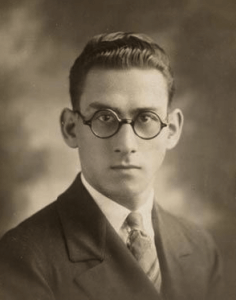
Israel Regardie in his Harry Potter days
It can equally be said that the Bristol temple was traditional when Israel Regardie was a member of it, even though a few years before he joined, they were experimenting with rituals which had been cut, so that diagrams which were exposed to the candidate’s sphere of sensation during the rituals, were simply shown to them during their study. After Regardie printed these cut-down rituals Bristol went back to their old ones.
It is ironic that these experimental rituals were published and have become seen as the orthodox tradition. One modern Golden Dawn chief once told me that she treated the six edition of the Golden Dawn book (nicknamed the black book) as the Bible of the Golden Dawn. Another Golden Dawn chief said that he didn’t want to run his temple like Mathers or Westcott, he wanted to do it like Regardie.
Such statements are important because they show the problems that many modern Golden Dawn people have equating what Regardie experienced and then suggested over the years with the Tradition.
Regardie himself made several significant changes to the Tradition which was not followed elsewhere. The first was the emphasis on psychology in magic which flowered by the 1970s but was mirrored by Dion Fortune in the UK. Unlike Fortune, Regardie was not impressed with the Inner Tradition of the Golden Dawn.
After his 5=6 in Bristol he went into the vault and one of the officers channelled a message from the secret chiefs (Ironically a prophecy about taking the Golden Dawn current to the United States). Regardie had seen something similar with Crowley and the shrink in him felt that it just came from a person’s unconscious. He passed on this prejudice to many modern Golden Dawn groups who do not try such contacts. Regardie also downplayed the importance of the elemental grades suggesting that people only needed to perform the watchtower ceremony to replace them.
In some cases, Regardie had no influence. One of his children was the Order of the Sphinx and Pyramid which was formed by Tamara Bourkoun. After she moved back to the UK in the 1960s she asked him for help to establish a Golden Dawn group which would act as an outer face for an Enochian based second Order she was creating. Like Regardie suggested, Tamara Bourkoun used cut down Golden Dawn rituals taken straight from his book. But in addition to that she was heavily into a form of Enochian channelling from several secret chiefs. Members of this group would go on to form the Order of the Cubic Stone, but would dump all semblance of Golden Dawn material and its chiefs would bend the ear about how bad the system was to anyone who would listen. Regardie thought the channelling was insane and declared Bourkoun “nuts.”
Contacts and channelling
The use of contacts was very much part of the Golden Dawn tradition. Other than Berridge, Brodie-Innes and Mathers had very specific ideas as to making contacts with the secret chiefs. These ideas would be passed on to the Cromlech Temple, and to the Society of Inner Light through the teachings of the AO initiate Dion Fortune. This means that anyone who follows Regardie’s line on Inner Plane contacts or the psychological approach is not following “the tradition.”
It would be easy for those who want to “sell” their group as traditional by claiming that their system is based on a particular epoch of the Golden Dawn tradition.
But if you take traditional Whare Ra for example this is equally a hiding to nowhere. The order had several distinct phases. For example, Mrs. Felkin when through a seven ray phase which would seem alien to many Modern Golden Dawn groups. In addition, many different Hierophants would do things differently. A senior adept in Whare Ra Barbara Nairn commenting on a workshop I gave about contacts said that it was something she had heard at Whare Ra but was not talked about for years.
Frank Salt, who has led one off-shoot of Whare Ra, had a different view of magic from Jack Taylor who led another. Barbara Nairn also did things differently. Some of this had to do with the way their spiritual path developed after Whare Ra closed. Jack Taylor was more interested in colour magic around the time he died. The Arthurian System of the Order of the Table Round influenced Percy Wilkinson.
Yeats
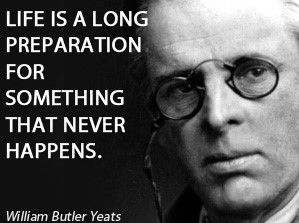 Another argument is by those who want to recreate their order based on documents that Yeats had. Sadly, Yeats must have had lots of them in his time. He was a member of the Golden Dawn and the Stella Matutina and some of them are wildly contradictory.
Another argument is by those who want to recreate their order based on documents that Yeats had. Sadly, Yeats must have had lots of them in his time. He was a member of the Golden Dawn and the Stella Matutina and some of them are wildly contradictory.
So what we have to wonder is when an Order stops being Golden Dawn and starts to be something else? It is not a simple matter. Like I said there are no clear landmarks which anyone can identify. Golden Dawn groups will, by their very nature, emphasise some things more than another. A Golden Dawn group which uses the rituals is still a Golden Dawn group and so is one which looks at inner or magical techniques. Even a group which rejected the Z documents, such as Waite’s Rectified Rite, still functions within the Golden Dawn egregore.
Those who might not like what one Golden Dawn group does, must accept that they are part of the same egregore because they also take on most what they do too. That is unless that they decide not to be part of that egregrore.
MOAA
In the case of the Magical Order of the Aurora Aurea we have made changes to the way godforms work. This is because we lean toward a more pagan approach to Godforms. We also use something like a contact system and inner temples.
I have edited the Whare Ra rituals to use modern English because we are based in Rome and a lot of our members have English as a second language.
We also use more modern translations of Bible verses and the Chaldean oracles. We also have a consensus based leadership with changes to the system being talked through with all the Temple chiefs before they are enacted. Yet we have many connections and teachings which came from Whare Ra; we use the same rituals, and share many of the same ideas.
Yet we do not consider ourselves as traditional and no longer see ourselves as part of the Golden Dawn egregore, although we see the Golden Dawn as part of our Tradition.
This is the point. There are no landmarks in the Golden Dawn and anyone can be traditional, or not, or even part of the Golden Dawn if they believe it. This is not the sort of landmark which would make many modern Golden Dawn members comfortable, it would mean that they would share an egregore with lots of groups that they have wild disagreements with. But it is better that than building your temple from what you think your landmarks are, and then discovering that someone in your Order’s history moved the boundary posts.
This post first appeared in Hermetic Virtues in 2012. I have re-spun the end a bit because I notice that people are still talking about Golden Dawn landmarks and being a traditional Golden Dawn Group.

Comments are closed